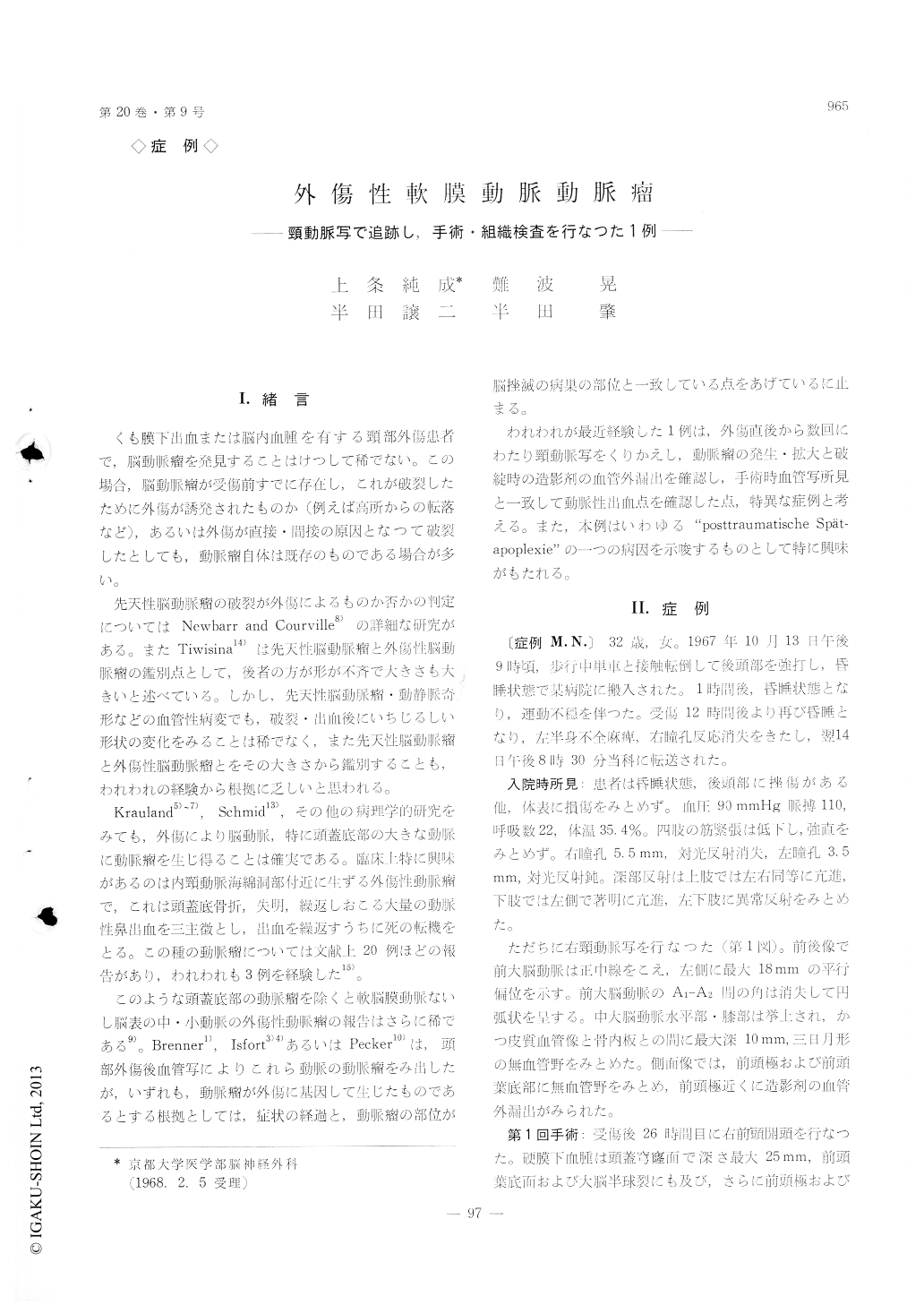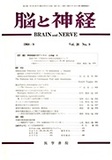Japanese
English
- 有料閲覧
- Abstract 文献概要
- 1ページ目 Look Inside
I.緒言
くも膜下出血または脳内血腫を有する頸部外傷患者で,脳動脈瘤を発見することはけつして稀でない。この場合,脳動脈瘤が受傷前すでに存在し,これが破裂したために外傷が誘発されたものか(例えば高所からの転落など),あるいは外傷が直接・間接の原因となつて破裂したとしても,動脈瘤自体は既存のものである場合が多い。
先天性脳動脈瘤の破裂が外傷によるものか否かの判定についてはNewbarr and Courville8)の詳細な研究がある。またTiwisina14)は先天性脳動脈瘤と外傷性脳動脈瘤の鑑別点として,後者の方が形が不斉で大きさも大きいと述べている。しかし,先天性脳動脈瘤・動静脈奇形などの血管性病変でも,破裂・出血後にいちじるしい形状の変化をみることは稀でなく,また先天性脳動脈瘤と外傷性脳動脈瘤とをその大くきさから鑑別することも,われわれの経験から根拠に乏しいと思われる。
A case of posttraumatic aneurysm arising from the posterior temporal branch of the middle cerebral artery has been reported in a 32-year-old lady.
First and second arteriographies disclosed subdural hematomas and severe lacerations of the brain in the right frontal and temporal region. Hematomas were evacuated and a temporobasal decompressive lobectomy was performed. Third carotid angiography performed on the 16th day after injury disclosed the irregularities and a small outpouching of the contrast medium in the posterior temporal branch of the right middle cerebral artery.
32 days after injury, the site of the previous de-compressive craniectomy in the right temporal reg-ion became swollen and tense, and the patient deteriorated rapidly. A repeat angiography disclosed two aneurysmal structures in the right posterior temporal artery, and an extravasation of the cont-rast medium noted. Operation revealed an active bleeding from the pial artery and a subdural extradural hematoma at the site of the previous decompressive surgery in the right temporal region. Histologically pseudoaneurysm and its rupture were verified.
Reviewing the available literature, the present case seems to be an exceptional case in which the post-traumatic formation of the pial artery aneurysm has been verified by repeat angiographies and confirmed at surgery and by histology.

Copyright © 1968, Igaku-Shoin Ltd. All rights reserved.


